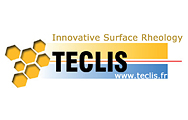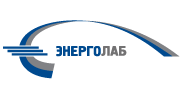CONFERENCE ON COLLOID CHEMISTRY
AND PHYSICOCHEMICAL MECHANICS

Historians have accepted the year of 1147 as the start of Moscow’s history. The progenitor of Moscow is the prince of Suzdal Yuri Dolgoruky. The princes of Moscow played a leading role in uniting various Russian lands and in conquering non-Russian peoples and territories. Moscow became the capital of the Russian Empire and was the home of Russia’s czars until 1712, when the capital was moved to St. Petersburg. Moscow again became the Russian capital in 1918.
The ancestors of modern Muscovites produced iron, curried, produced pottery. Almost everyone had a garden.
In general, the site of today’s Moscow, people lived a long time. As a result of archaeological excavations uncovered stone tools and bones, showing that in modern Moscow lived ancient people engaged in hunting and fishing. And at the confluence of the Neglinnaya the Moscow River settlement was inhabited by pastoralists.
In the city and its surroundings take place dozens of rivers. Large rivers are tributaries of the Moskva River — Yauza, Neglinnaya, Skhodnya, Kotlovka, Khodynka, Setun. Under current conditions, many of them were enclosed in the sewers.

Moscow is one of the most beautiful cities in the world. The heart of Moscow is Red Square. It has more historic associations than any other place in Moscow. The Kremlin and St Basil’s Cathedral (Vasily Blazheny) are masterpieces of ancient Russian architecture.

The main Kremlin tower, the Spasskaya Tower, has become the symbol of the country.

On the territory of the Kremlin you can see old cathedrals, the Bell Tower of Ivan the Great, the Tzar-Cannon and the Tzar-Bell, the biggest cannon and bell in the world. St Basil’s Cathedral was built in the mid-16th century in memory of the victory over Kazan. There’s a legend that Ivan the Terrible blinded the architects Barma and Postnik, because he didn’t want them to create another masterpiece.
In the Diamond Fund are kept two of the world’s most famous diamonds. One of them is called «Shah», its mass is 88 carat. In 1829 it was given to Nikolai I by Tehran Shah in token of reconciliation after the defeat of the Russian embassy and the killing of the poet and diplomat Alexander Griboyedov.

Diamond «Orlov» is the largest in the fund collection. He allegedly was found in India, and was an eye of Buddha statue.

Later it was bought by Count Orlov as a gift to Catherine II.

Speaking about art galleries of Moscow we must mention the most famous galleries.
The State Tretyakov gallery is one of the best known picture galleries in Russia. It takes its name from its founder Pavel Tretyakov, a Moscow merchant. In the 19th century Tretyakov began to collect Russian paintings. He visited all the exhibitions and art studios and bought the best pictures. Little by little Tretyakov extended his interests and began to collect earlier Russian paintings.

In 1881 Tretyakov opened gallery in St.-Petersburg to the public, 11 years later he donated it to the city of Moscow. Since then the gallery has received hundred paintings from other museums and private collections. The Tretyakov gallery reflects the whole history of Russian paintings from the 11th century to the present day.
State Pushkin museum of fine art also is one of the famous and largest museum in Russia. The building was built in Greek style by Roman Klein in
The Pushkin museum periodically holds exhibition of the art of various countries and of individual outstanding artist of past and present.

Moscow is surrounded by the forest. But in the city itself, there are about hundreds of parks, including Timiryazevskiy Neskuchniy garden, Botanical Garden with a unique collection of plants, located in the east of the city of a National Park Losiniy Ostorv), Izmailovo park, created in 1931, is one of the largest urban parks in the world along with Richmond Park in London. Its area of 15.34 square kilometres is six times greater than that of Central Park in New York.






One of the most mysterious places in Moscow — Tsaritsyno. This place called the «Black Dirt» because it was «unluck». Since ancient times it was said to drive their owners out.




Tsaritsyno is the largest museum-reserve and historical and cultural monument of the federal level in Moscow, occupying over 700 hectares. Its nucleus is the largest palatial ensemble in Russia — the residence of Catherine the Great constructed between
Kolomenskoye is not less unique. It was a residence of Moscow Grand Princes and Russian Tsars first mentioned in the XIV century. Its unique architectural complex is of great art and historical value.

In the Kolomenskoye Park there is the famous Ascension church. It was built in 1532.
The church has been known for centuries as a unique example of Russian architecture that has deeply influenced the architectural tradition of East European countries. In all its years it has never undergone considerable rebuilding or reconstruction, which was one of the reasons why it was included in 1994 into UNESCO World Heritage List, along with Moscow Kremlin and Red Square.
Now the city is one of the largest cities in Europe. The total area is about 900 square kilometers (ancient Moscow occupied the territory of the modern Kremlin). Population of over 9 million.
Moscow is a modern transport network. 12 million people go by buses, trolleybuses, trams and metro everyday. The length of the Moscow Metro path is 278 km. It consists of twelve lines, which is one hundred seventy-two station. Most stations are located underground.
Moscow is not only the capital of Russia but also a scientific center. The Russian Academy of Sciences includes 90 departments and 78 research centers. Besides the RAS in Moscow are located other scientific academes.
One of the oldest Russian institutions of higher education, Moscow University was established in 1755. In 1940 it was named after Academician Mikhail Lomonosov (1711 — 1765), an outstanding Russian scientist, who greatly contributed to the establishment of the university in Moscow.

In 1755, on 25 January, St. Tatiana’s Day according to the Russian Orthodox Church calendar, Empress Elizaveta Petrovna signed the decree that a university should be founded in Moscow. The opening ceremony took place on 26 April, when Elizaveta Petrovna’s coronation day was celebrated. Since 1755 25 January and 26 April are marked by special events and festivities at Moscow University; the annual conference where students present results of their research work is traditionally held in April.
In the structure of the University of Moscow today there are 39 faculties, Moscow University comprises 15 research institutes, 4 museums, 6 local branches in Russia and abroad, about 380 departments, the Science Park, the Botanical Gardens, The Library, the University Publishing House and a printing shop, a recreational centre and a boarding school for talented children.
A number of new faculties, departments and research laboratories have been recently established, new academic programs are being continuously introduced together with new curricula; there are over 140 distance learning programs. Research has recently started in 30 new interdisciplinary areas.
Moscow is one of the largest cultural center of the country:
The Tretyakov Gallery’s and the Pushkin museum’s collections compete with the most famous collections. In Moscow there are 109 cinemas, 31 concert hall, 142 exhibition centers, 78 museums and 72 theaters, such as the famous Grand Theatre, Mossovet, Lenkom, Theater of Satire and many others.
One of the main cultural symbols of our state is the Bolshoy Theatre.

Bolshoy began its history as a private theater of the provincial prosecutor of Prince Peter Urusov. 1776 March, 28 Catherine II signed the prosecutor Prince Urusov «privilege» for performances, masquerades, balls and other entertainments available for 10 years. This date is considered the foundation of the Bolshoi Theater, which is the national theater of Russia, native traditions and the center of world music, contributing to the development of theater art of the country.
The Secretariat of the ConferenceMr. Fyodor Kulikov-Kostyushko (executive secretary)
Faculty of Chemistry, Lomonosov Moscow State University You may contact the Conference Secretariat on all issues, and particularly on issues regarding scientific content of the Conference (scientific program, abstracts submission, deadlines and timetable, special conditions of participation, etc.), and about humanitarian visas. The Service Agent of the ConferenceMr. Vladimir Andrianov (project manager) MONOMAX CONGRESSES & INCENTIVES Our Service Agent should be contacted on such matters as participation in the exhibition, sponsorship and partnership, technical issues with payments, visa support (tourist visas only), and extra services (hotel accommodation, transfers, social program, etc.). |
+7 (495) 726-51-35
icc2013@onlinereg.ru
Official services agent
MONOMAX CONGRESSES & INCENTIVES Professional congress organizer 
|



